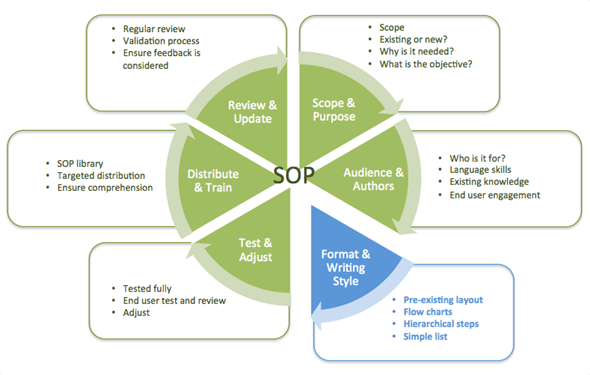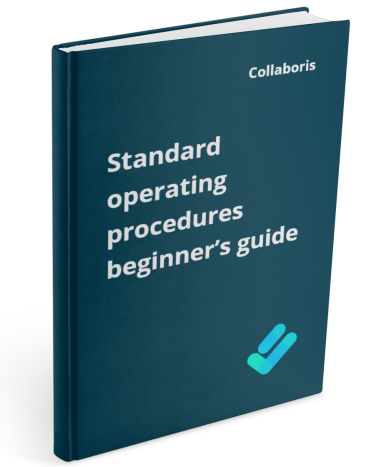Standard Operating Procedures Guide – Format & Writing Style
Welcome back to the fourth in our series of blogs describing the Key elements in the SOP lifecycle. So far we have introduced the ‘SOP pie’ and have dived into the first two slices. This blog will dig further into the third slice – Format & Writing Style and consider how to format and write the SOP.

This slice goes hand in hand with the previous subject of 'Audience and Authors' to really get to the details of how the SOP will be written. Consider how to format the SOP by thinking about how it will look and feel. Your aim is to get the message across in the best possible way.
Tired of reminding staff to read your company policies?
DocRead makes compliance simple
How to format and write your SOP
Keep it simple!
Remember at this stage to keep it simple, sometimes the best SOP is an environmental SOP, where a document or procedure is not required at all. Simple examples of this are:
- If you want people to walk in one direction around the laboratory or factory, would an arrow on the floor and walls work?
- If things need to be done in a particular order, could that be achieved by layout, labelling and numbering?
These environmental SOP’s used in the correct circumstances can be far more effective than any documented version.
Before you start writing
Firstly, once you have decided an SOP document is needed there are some simple points to consider before putting pen to paper:
- If it isn't broken, don't fix it!!
- Is this an existing SOP that is working and just needs a refresh and update?
- Do we have a standard format in use for SOPs? - does it work, and would it work in this scenario? - 83% of human learning and understanding occurs visually - If there are many routes through the process, then consider using a flowchart layout.
- Clarity and separation of responsibilities - Is the process very long and involves various audience levels? Then it may be better to have hierarchical steps, i.e. a list of main steps with sub-steps underneath.
- Keep it simple - Is it a simple routine with a few steps? As with many things in life, the wisest option is to keep it simple. A list may be the most effective format.
- Clear and concise - Ensure any text in the document is clear and concise. If it is difficult to follow, that will almost certainly stop the SOP being used.
- Try not to reference the person (You, He, She, Him, Her).
- Ease of reference - Ensure steps are clearly shown to help with ease of reference and maintenance in the future.
- A picture paints a thousand words - Break up large chunks of texts with diagrams and flowcharts.
Now we are in a position where we fully understand what we are trying to achieve. We know who our audience is, who the contributors are, and how we will layout the document. The next step is to write the SOP.
Writing your SOP
When writing your SOP, you need to include as much detail as possible. Ideally, write it as a step-by-step guide that anyone can follow to successfully complete the task. You should also include answers to who, what, why, where as well as details on how to complete the task. Don't forget to include explanations or definitions for any technical jargon that readers may not understand.
A great test for a SOP is to ask someone who has never completed it before to follow the instructions. If they successfully complete it, then you are off to a great start. Any feedback they have can also be used to improve the SOP.
Get your free policy template
Using a Collaborative environment to create your SOP
We recommend that you use a collaborative environment to write the SOP with the participation of the different contributors. Microsoft SharePoint is an example of such a tool. SharePoint has the concept of "Team Sites", where all the contributors can collaborate to create and maintain the SOP document. You can use "Document libraries", "Task Lists", and "Discussion Groups" to record and log all decisions taken during the creation of the document. Once the final version of the SOP is agreed upon, it can be pushed to a corporate SOP library and targeted at the right audiences using tools like Collaboris' DocRead.
These considerations will be covered in more detail in the second half of the SOP pie, starting with the next in the series - Test & Adjust
Other articles in the series:
- 1st in the Series - Introduction
- 2nd in the Series - 'Scope and Purpose'
- 3rd in the Series - 'Audience and Authors'
- 4th in the Series - 'Format and Writing Style' (this post)
- 5th in the Series - 'Test and Adjust'
- 6th in the Series - 'Distribute & Train'
- 7th and final in the Series - 'Review & Update'

